Enter the Dragon - Bruce Lee's legacy Still Inspiring 50 Years After His Passing! (21.7.2023)7/21/2023 HONG KONG, July 20 (Xinhua) -- The man, the myth, the legend. Bruce Lee was all of these things and more. On July 20, 1973, the world lost one of its most iconic and influential figures when he passed away suddenly at the age of 32. Yet, 50 years later, his legacy lives on, larger than life and more resonant than ever. Tourists flock to the Avenue of Stars along the Victoria Harbour waterfront in Tsim Sha Tsui, Hong Kong, a place of pilgrimage for Bruce Lee fans from around the world. They pause at Lee's bronze statue to pay tribute to the martial arts master, often laying flowers at the base of the two-meter-high effigy that showcases Lee's classic Jeet Kune Do move, inspired by his final complete film, "Enter the Dragon." Source: Xinhua Editor: huaxia 2023-20-07 Shin Yong-woo from South Korea is one such fan who has travelled over 1,000 miles (1,600 km) to pay homage to his hero. He stood before the statue, dressed in black pants with his bare chest exposed, just like Lee frozen in frame by the monument. With a pair of nunchaku in his hands, Shin began his performance, twirling the weapons with fluid precision. A fan since he was nine years old, Shin credited Lee with inspiring him to learn Chinese martial arts. Some pay their respects with a simple bow or a moment of silence, while others perform their own martial arts routines in front of the statue, channelling their inner Bruce Lee. Unlike Shin, who reveres Lee's Kung Fu as a physical art form, Patrick Weber from Britain is more drawn to the deeper meaning and philosophy behind Lee's teachings. Weber held a 25-year-old "Enter the Dragon" poster as he took photos in front of the bronze statue. He also brought a thick album that documents his more than 50-year journey as a fan. Lee's legacy includes a collection of inspiring and insightful quotes that have resonated with people of all ages and backgrounds. "The key to immortality is first living a life worth remembering." "The successful warrior is the average man, with laser-like focus." "Do not pray for an easy life, pray for the strength to endure a difficult one." "I love his philosophy on life," Weber said. "And the multiculturalism he portrayed was exactly what the world needed at the time." Born in San Francisco in 1940, Lee spent much of his childhood and formative years in Hong Kong, where his father was a well-known Cantonese opera singer. It was in Hong Kong that Lee began to study martial arts. His passion for Kung Fu and his innovative approach to martial arts quickly earned him a following in Hong Kong, where he starred in several successful films and TV shows. His fame and influence soon spread to other parts of China and Asia, inspiring a new generation of martial artists and popularizing Chinese culture and philosophy around the world. As one of Hollywood's most influential Chinese American actors, Lee introduced Chinese martial arts and its underlying culture and philosophy to the world through his films, and even brought the term "Kung Fu" into the English language. His confident portrayal of Chinese culture in martial arts movies continues to inspire people decades later. "He's so cool!" said Sophie Uekawa from Japan as she looked at the statue, reminiscing about her teenage years several decades ago. "In 1973, Bruce Lee's movies became a sensation in Japan when they were first released. The queues for his films were so long that they stretched for several blocks, and 'Enter the Dragon' played for more than a year in one cinema before it was taken." In recent days, a series of commemorative events in Hong Kong have confirmed the enduring influence of the Chinese Kung Fu culture that Lee represented. The "Bruce Lee: A Timeless Classic" exhibition opened at the Hong Kong Heritage Museum, showcasing various books, stamps, and figurines related to the superstar from different eras. The museum also has a permanent exhibition introducing his life story. Inside the exhibition hall, a wall of famous quotes presents Lee's philosophy: "Using no way as a way, having no limitation as limitation," "Success is a journey, not a destination," and more. Wang Wei, who works in the education industry, included the exhibition as one of the stops for Chinese mainland students on their educational tour of Hong Kong. "Bruce Lee is an important part of Hong Kong's pop culture and represents the Chinese spirit and character embodied by the people of Hong Kong," Wang said. "With a profound understanding of Chinese culture, he showcased the confidence of Chinese culture through Kung Fu." The Bruce Lee Foundation is holding its first "Camp Bruce Lee" event in Asia at the Hong Kong Heritage Museum, where about 30 primary school students from Hong Kong are experiencing Jeet Kune Do and learning about the star through various art forms over a few days. "This movie is about the history of Japanese imperialism invading China in the last century ..." Inside the museum, the guide points to a still from the movie "Fist of Fury" and introduces the plot to the young campers while explaining the national history. The still captures the moment when Lee's character Chen Zhen kicks down the "Sick Man of East Asia" sign in the movie. English Language Xinhua Article: Feature: Enter the Dragon -- Bruce Lee's legacy still inspiring 50 years after his passing
0 Comments
Translator's Note: According to the HISTORY of the International Meibukan Goju Ryu Karate-Do Federation - during 1952 Miyagi Chojun gave permission for his leading disciple Mr. Yagi Akitoku [八木明德] (1912-2003) to establish his own Dojo! The following year (in 1953) Miyagi Chojun formally passed the 'robe' and 'belt' to Yagi Akitoku confirming his status as the lineage inheritor of the Goju Ryu Karate-Do lineage. Yagi Akitoku is also known as Yagi Meibukan - as 'Meibukan' (明布馆 - Ming Wu Guan) which translates as 'Bright' or 'Pure' 'Warrior Training Hall' - as this is the name he gave his first Dojo and the manner in which his lineage of Goju Ryu was referred to thereafter. Whilst researching the various histories of Goju Ryu preserved within the 'International Okinawan Goju Ryu Karate-Do Federation' (IOGKF) - I have never come across this man's name! Indeed, it was only whilst researching the history of 'Meibukan' on that Style's Hong Kong site (in preparation for translating this article) that I learned of Yagi Meibukan and the general attitude of respect that abounds for him amongst the martial arts community of China, Okinawa and Japan! I have 'Maria Manalastas' and her 2018 (Chinese language) article conveying her journey to Okinawa and her training in the Karate-Do of the MURASAKIMURA Dojo! She is a University student from the UK whose ancestry hails from the Philippines. As we have very close ties with the Filipino people - we welcome her interesting article - which I translate here! ACW (10.10.2022) Hello everyone! I'm Maria from the Okinawa Holiday Hackers Editorial Department. It has been four months since I came to Okinawa, and now I am experiencing the Karate-Do Dojo in the kingdom of MURASAKIMURA. There I met Mr. Kinjo, Mr. Kevin and Mr. Florian! Senior Instructor Kinjo (full name ‘金城 敬章’ - ‘Kinjo Hiroaki’) is the Head of the ‘International Meibukan Goju Ryu Karate-Do Federation’ - that is the ‘Bright Martial Training Hall’ which is said to be the ‘true’ and ‘genuine’ inheritor of Goju Ryu Karate-Do tradition as founded by Miyagi Chojun (1888-1953). The ‘Hard - Soft’ (Goju) Style of Karate-Do – as led by Kinjo Hiroaki is a member of the ‘Yomitan’ Branch of the ‘Daoist Alliance’. Mr. Kevin Chaplin and Mr. Florian Poupard are Technical Instructors associated with the Okinawa Traditional Kobayashi Ryu Karate-Do and Kobudo Federation and the World Shorin Ryu Society, passing on their knowledge of Karate-Do to the world. It is slightly bewildering to gain access to such expert teachers so easily! Mr. Kevin Chaplin, for instance, is British and started trained at just 12-years old – he earned his Black Belt at 24-years old! How long does it take to earn a Black Belt? Well, that all depends on motivation and circumstance. With regular training and a high standard of commitment coupled with excellent instruction – a Black Belt can be earned in three or four years – but it all depends. Some people like to take their time and progress slowly but surely – focusing on different skills and on overcoming various weaknesses or shortcomings. Sometimes, individuals have no interest in grading and spend years working-out at the back of the Dojo! I am told that an old Black Belt sometimes fades to ‘gray’ and that there are various types of Black Belt all the way up to ‘White Belt’ again – an honour rarely bestowed in Japan and Okinawa (and only then usually by the Japanese Government itself – as such an individual becomes a ‘National Treasure’)! This means the student has completed the entire circle of mind-body self-cultivation and is beyond grading! As the practice is barefoot – I do not need to wear trainers. Oh, I forgot to introduce myself! I am a student studying at a university in the UK. I am doing a one-year Internship in Okinawa, and I have been living in Okinawa, Japan since September 2017. Before coming to Okinawa, I thought about what I wanted to do, and thought of ‘Karate’ and ‘snorkelling’. Especially Karate for self-defence. The turbulent society here has granted me ‘opportunity’ and ‘result’! In the UK, I have also taken many Karate courses described as ‘Women's Self-Defence" - but no matter as they were all single-shot – and I have almost forgotten what I have learned before the next class. If you encounter an emergency, what skills should you use to deal with it? When asked this question I had no idea of the answer! I really want to learn about self-defence properly and to a greater depth. Even if it's just a little bit of good quality knowledge – such learning can make you feel more at ease! When I was a child, I was often taught that ‘even at noon, never go out alone, and definitely go out with someone you know’, but this attitude did not teach us about self-defence, which made me feel very insecure as a child. When traveling alone from England to the unknown land of ‘Okinawa’, I decided to development my abilities and make the most of this time. After I asked Mr. Kinjo and Mr. Kevin who teach Karate-Do in MURASAKIMURA, they said that the techniques are different depending on the Karate-Do ‘Style’. I was surprised and found a more attractive side to Karate-Do than just self-defence. There are so many more and different elements than simply nullifying an attack! It may be an exaggeration to describe this, but through the principles of Karate-Do training - we can connect to our lives and discover our own true value! We become self-aware through the process of concentrating upon our body posture and movement – as well as upon being aware of our state of mind! Awareness in the mind ‘expands’ throughout the body and a general sense of ‘Wholeness’ develops! I am able to see things from a ‘Beginner’s’ perspective – even though I have a little bit of experience. Prior to coming to Okinawa I had no idea that Karate-Do has ‘different’ Styles! Self-defence courses are very basic and do not bother with background information. The teachers charge a lot of money and spend a few hours showing the most basic movements. In the Dojo of MURASAKIMURA things are very different! Here, two ‘Styles’ share the training space harmoniously! This is the ‘Kobayashi Ryu’ Style (which moves sharply from left to right and right to left – whilst the ‘Goju Ryu’ Style uses big, circular movements which flow smoothly forward and back! In this Dojo the differences between Styles are respected and preserved – but this does not stop a positive interaction! Although the MURASAKIMURA Dojo is very strict – it is also very welcoming, and thousands of people visit every year! This led to the development of the MURASAKIMURA Hotel which is not very far from the Dojo! We must enter the Dojo with respect by bowing at the door and walking calmly to our training spot on the Dojo floor. We then must sit down in the Japanese ‘Zen’ style and ‘meditate’ so that the mind and body ‘relaxes’ before the in-depth technical training begins. Leaving the stresses and tensions of the world ‘outside’ is a unique quality of ‘Karate-Do’ - and is certainly a cultural attribute I could not find in my home country of the Philippines! As training happens all through the day – the type of training varies depending upon the time of day (and the type of Yin-Yang energy in the air). After meditation we loosen the body from bottom to top and work on strengthening. After that there is technical practice, Kata and sparring, etc. Although basic agendas are followed – sometimes individual students have come for a particular type of training and the teacher(s) separate the class into appropriate groups. From the tips of the toes to the top of the head and to the tips of fingers – every part of the body was systematically trained so that the next day I was as stiff as a board and thought my body was going to fall apart! The instructors are happy to share a joke or have a laugh – but do not over-step the line of respect or the training will take an unexpected turn! Although this Dojo is open to the general public - ‘special’ classes also are given for disciples and students who are looking to achieve a very high level in Karate-Do! This training is different and not for the faint of heart – although we were not allowed to see any of it. We were told ‘stories’ by other students although the instructors said nothing. One of my favourite areas of Karate-Do is the weapons training! I had never seen this in the UK and absolutely love all the different implements! This was the area I requested extra training within. One of the stories is that an Okinawan King once banned weaponry amongst the population – and so all the Karate-Do weapons look like farming tools! Every part of the Dojo floor must be regularly cleaned and maintenanced. The Okinawans (who follow many Chinese customs) say it is an ‘honour’ to do this! To make this system work, everyone must be polite and well disciplined! There are many different training paths being pursued at any one time – and rarely are you left alone. I personally like it when large groups all move together – punching, kicking and blocking their way up and down the hall! It takes tenacity to enter the Karate-Do Dojo every day and voluntarily submit yourself to the hard discipline of Karate-Do training! Teacher Kevin seems to have some doubts about modern karate. Nowadays, many people just want to learn the skills that appear in the movies or the movements that can get high scores in the competition. However, compared with those who just want to get the first place, the number of learners who aim to get a Black Belt has gradually increased recently, and the teachers are also very happy because of this. That's what I thought at first too (Can't you just learn the techniques that appear in the movies?) but as I wrote above, having a connection to everyday life is the beauty of karate. Whether it's karate or other fighting skills, you must never retreat when defending, you need to keep moving forward. Teacher Kevin said that this is how he learned. There are very few backwards Karate-Do skills, and so is our life. Although it is a very old-fashioned statement, just recalling the past will not help you, and will not change anything at all. But every next step, as much as possible, move forward and change according to what you want. You can learn a lot of life lessons from the techniques and movements of Karate-Do. Decide in advance what kind of Karate-Do you want to learn. I would recommend visiting the MURASAKIMURA Dojo and talk to the instructors who will be happy to talk with you about all your training needs. Original Chinese Language Source: Maria Manalastas
大家好!我是Okinawa Holiday Hackers编辑部的玛利亚。 来冲绳已经过了四个月了,现在我在体验王国MURASAKIMURA的空手道场。 在那边遇到了金城老师·Kevin老师·Florian老师。 金城老师(本名:金城 敬章)为国际明武馆刚柔流空手道联盟 读谷支部所属的金城空手道道场的馆主。 Kevin老师(本名:Kevin Chaplin先生)跟Florian老师(本名: Florian Poupard)冲绳传统小林流空手道‧古武道联盟 世界王修会内的技术指导员,向全世界传递关于空手道的知识。 不用怀疑,全部都是黑带保持者!☆ 可以这么简单的见到这么厉害的老师们,让我觉得有些难以置信….! 这次从英国来的的学徒们都是指名Kevin老师来传授武技! Kevi老师十二岁开始学习空手道,但也不仅一直在学空手道,也有在学习其他武术。在年仅24岁时就获得了黑带。 ((取得黑带到底要花多少时间呢?))这样想着就去问了老师,老师说快的话三年、四年,大部分的人在锻炼技术跟体力上反而会花上更多的时间。 黑带后,是灰带么? 一开始看到Kevin老师的腰带, ((这个是灰色么?原来还有这种颜色~之前都不知道~~~)) 想着,就赶紧去问老师。老师说:「拿到黑带后,不停地锻炼,它慢慢的褪色,然后就变成灰色了」原来还有这种不为人知的故事哦! 黑带不是终点,在这之后还不断地精益求精,这才是真正的强大!! 还有,在练习中是赤脚练习,不需要穿运动鞋。 Oh,在这之前忘了自我介绍了。 我是在英国的大学就读的学生。 正在冲绳进行为期一年的实习,2017年9月开始住在日本冲绳。 来冲绳之前思考了自己想要做些什么,想到了 “空手道” 和 “浮潜” 。尤其是空手道,特别想尝试。为了Self defence(防身术)。在这里动荡的社会…。 契机与结果 在英国我也上过很多次 “女子防身术” 的空手道的课程,但无论哪次都是单次式的,等下次上课的时候之前学了什么几乎都忘了。如果遇到紧急的时间,到底要用什么技巧来对应呢?当被这么问的时候,我连答案都说不出来。所以真心地想要再次学习关于防身术的技能。哪怕是一点点只是也好,能让自己安心一点。 小时候经常被教导 “就算中午也绝对不要一个人出门,绝对要跟认识的人一起出去” ,但却没有教我们关于自我防卫的知识,反而让儿时的我很没有安全感。 只身一人从英国漂洋过海来到未知的土地冲绳” 时,决定了解自身的能力,并且充分利用好这段时间。 询问了在MURASAKIMURA教导空手道的金城老师、Kevin老师后,他们说根据不同的流派技术也不同,让我吃了一惊,发现了比防身术更有魅力的一面。 这样形容或许有点夸张,但通过空手道的行动原理可以联系到我们的人生,进而发觉自己的价值。打破了自己是由身体的各个部位构成的认知,而是深切体会到了人体不仅仅是单纯的呼吸以及动作,而是通过身体所有的构造协作运行的。 (初学者的我也能理解)两个流派最大的差异是“移动的方向”。小林流是左右两侧大幅移动、刚柔流则是前后大幅移动。 虽然是不同的流派,但深刻体会到了流派间相互的尊重。 道场的导览 这里是MURASAKIMURA的道场哦! 很像是电影当中的场景吧!?光看到就让我超激动的。 MURASAKIMURA内也紧邻着 “MURASAKIMURA酒店” ,听说为了学空手道而来长住的客人也不少呢。 行过礼之后进入道场,首先从冥想开始。 充满紧张感的寂静,虽然自己一直想静下心,但因为自我意识太重而导致一直分心去关注别的事物,反而渐行渐远。像这般安静,在我的祖国菲律宾是绝对不可能会有的。 根据当天练习内容的不同,热身运动也不同 冥想结束后,接下来是热身运动。 Kevin老师和我说,空手道和其他的运动不同,是根据当天练习的内容,热身运动的内容和长度也不一样。有时甚至需要花30分钟来做热身运动。 由Kevin老师所带领的MURASAKIMURA的空手道达人,不管大家有没有经验都非常欢迎,十分亲切温和,但千万别被骗了(笑) 做好第二天自己身体会像玩具总动员的蛋头先生一样碎成一地的觉悟。 (隔天全身仿佛都要散架了…。感觉要死了。) 武器 热身运动结束后,进入道场时一直让我很在意的武器放置所。 从前冲绳的某位皇帝曾经颁布 “禁止使用武器令” 的条例,所以大部分武器看起来像是农具的样子。 Kevin老师稍微教了一下短拐的使用方法。短拐的拿法和角度不同,给对手给予的伤害也会不一样。「以最大的力量沿着手臂握着短拐」Kevin先生如是说。 将道场的空间运用到最大化,调节自己的脚步与攻击。集中在自己的手臂和脚需要摆在哪个位置,思考着是否比刚才的防御、刚才的攻击更加正确。 据说将防御·攻击的一个动作做到完美,需要花上一年。Kevin老师说光看一天下来花了多少时间在那个动作上,就能看出你的腰带是什么颜色。 让我重新见识到能够忍受日复一日的练习的坚韧以及注意到微小的动作的敏锐,这就是空手道的美感。 Kevin老师似乎对于现代的空手道有些疑问。 如今有不少人只想学在电影中出现的技巧或者在比赛中可以得高分的动作,对于动作的原理和意义知之甚少,因此陷入了低潮。但是比起那些只想得到第一名的人,最近以拿到黑带为目标的学习者也逐渐增加,老师也因此而很开心。 一开始我也是这么想的((不能只单纯地学习电影中出现的技巧吗?))但正如我上面写的,和日常生活有所关联才是空手道的魅力所在。 不管是空手道,还是其他格斗技的练习,防御时决不能后退,需要不断地前进。Kevin老师说他就是这么学习过来的。 几乎没有往后倒退的空手道技巧,我们的生活也是如此。虽然是很老套的说法,只回忆过去对自己没有帮助,根本不会改变什么。但是接来下的每一步,都尽可能的依照自己所想的前进,去改变。 从空手道的手法·技巧上可以学习到很多人生的道理。 事先决定学习什么样的空手道 可以在MURASAKIMURA上的课程中学习到空手道的基础、手法等。 在我的内心中曾经有着 “无法学习空手道的理由” ,但已经因为这次美好的邂逅而消失了。难得来到空手道的发源地,不学习不是很浪费吗? 想学看看、想了解空手道!在荧幕前的美女们! 不仅日文和英文,中文和韩文也可以对应。不来MURASAKIMURA这边学习基础空手道看看吗?穿着空手道服,光听着空手道的由来就会有自己变强的错觉♪ 刚学习空手道,或者是正在思考要不要学的帅哥们! 专业的空手道家,或者腰带持有者的你们。推荐你们前往MURASAKIMURA内见见Kevin老师们! 老师们有着指导世界各地学徒的经验,从身体·能力·目标·需求中找到适合你的方法。 在这里不仅仅是老师为你答疑解惑,你也可以一起交流自身的技术和经验,请一定要去MURASAKIMURA道场看看♪ Translator’s Note: This version of history is different from the 1989 declaration in China that ‘Ryu Ryu Ko’ (the ‘teacher’ of Higaonna Kanryo) was in fact ‘Xie Chongxiang’ (謝崇祥) [1852-1930] - known locally as ‘Ru Ru Ge’, ‘Ru Ru Shi’ and ‘Ru Shi’, etc. In many texts, this well-known White Crane Fist teacher is known as ‘Xie Ru Ru’ (谢如如). The ‘International Okinawa Goju Ryu Karate-Do Federation’ (IOGKF) - formerly led by Higaonna Morio (who has recently rescinded control) – does not accept this research. This is because this organisation has a different version of historical events – which I present below in English translation. For those fully aware and accepting of the ‘Xie Chongxiang’ identification – the following will explain ’why’ the IOGKF does not adhere to this narrative. From a purely historical perspective, the discrepancies of interpretation are interesting. An important contextual point to bear in mind is that by 1915 - it would have been thirty-four years since Higaonna Kanryo left China in 1881 - with Ryo Ryo Ko presumably ‘dying’ not long after this date. The glaring contradiction is that in 1915 - Miyagi Chojun (whilst visiting Fuzhou) - was shown the 'Tomb' of 'Ryu Ryu Ko' whilst 'Xie Chongxiang' was still alive! ACW (30.9.2022) During May 1915, Miyagi Chojun and Nakamoto Hideyoshi (仲本英炤) - the latter also being a prominent Okinawan martial artist – travelled together to the Fuzhou area of China’s Fujian province! By this time – the Grand Master Ryo Ryo Ko – had long been deceased. As the ‘Chief Disciple’ of Higaonna Kanryo, however, Miyagi Chojun attempted to gain access to the surviving family and martial lineage descendants of ‘Master Liu’ (刘氏 - Liu Shi). This is described as Miyagi Chojun attempting to successfully ‘gain entry’ to the ‘Liu Gate’ (师门 - Liu Men) - despite Master Liu having been deceased for quite some time. Miyagi Chojun, however, discovered that most of the members of the ‘Liu’ family (and his martial ‘lineage’ disciples) had moved out of the Fuzhou area – due to warfare. Those still living in the area were elderly people of the same generation as Higaonna Kanryo. The Senior (elderly) ‘Liu’ disciple still remaining (and who could remember Higaonna Kanryo) led Miyagi Chojun (and his group) to the Tomb (墓 - Mu) of ‘Master Liu’ (ルールーコウ- Ryū Ryū Ko) so that the ritual of Confucian ‘respect’ (拜祭 - Bai Ji) could be correctly performed. After this duty was completed – Miyagi Chojun was then taken to the place where Higaonna Kanryo used to practice martial arts. During October 1915, Higaonna Kanryo gathered his students and disciples together in Okinawa and formally announced that ‘Miyagi Chojun’ was chosen as his official ‘lineage’ descendent and successor! Miyagi Chojun spent thirteen-years training under Master Higaonna Kanryo’s guidance (1902-1915). As the teaching of Higaonna Kanryo was so strict – Miyagi Chojun was the only student to train for such a long and sustained period of time! This made Miyagi Chojun the ‘Chief’ disciple amongst the many that trained – and the ‘Leading’ disciple of the Higaonna Naha-Te tradition! Miyagi Chojun remained entirely loyal to Higaonna Kanryo until his passing – and then preserved his memory without hesitation. During 1916, as the ‘lineage’ inheritor of Higaonna Kanryo – Miyagi Chojun experienced his first occasion of ‘hosting’ visitors from Fuzhou! These people were Chinese martial artists visiting Okinawa to pay their respect to the ‘lineage’ of Higaonna Kanryo (which had been transmitted from Fuzhou to Ryukyu). As ‘lineage’ inheritor – the respect expressed for Higaonna Kanryo (when not directed to his Tomb or living Higaonna family members) was directed toward Miyagi Chojun himself – who was responsible for all the arrangements of these visits. On July 2nd, 1917, Miyagi Chojun (accompanied by ‘Wu Xiangui’ [吳賢貴] as translator), left Okinawa to visit Fuzhou to carry-out further research into the local martial arts practiced there. This included the ‘六机手’ (Liu Ju Shou) or ‘Rokuki’ (‘Six Weaving Hands’) technique - which later evolved into the ‘Tensho’ (転掌) Kata – translating as ‘turning’, ‘evading’ or ‘entwining’ - ‘hands’. Miyagi Chojun also began to study the Chinese manual entitled ‘武备志’ (Wu Bei Zhi) or ‘Military Preparation Record’ at this time. He also started to develop various patterns of martial movements to assist students in their daily practice. Chinese Language Source: 作者:猫爷习 https://www.bilibili.com/read/cv1652712/ 出处:bilibili
宫城长顺先生生平介绍(转载) 1915年5月,宫城长顺先生与仲本英炤氏前往福州,以首席弟子的身份福州拜见刘氏师门后人。在福州宫城长顺先生发现刘氏门人因战乱大多已迁离福州,唯独留 下几位与东恩纳宽量先生同辈份的上年人。门人领着宫城长顺先生一行人去到刘氏( ルールーコウ,Ryū RyūKo)之墓拜祭以及去昔日东恩纳宽量先生习武之旧址。 1915年10月,東恩纳寛量先生临终前向门下学生正式宣布宫城长顺先生为他的继承者。宫城长顺先生在东恩纳宽量先生门下一共十三年,直到东恩纳宽量先生过世为止,是东恩纳宽量先生门下学武时间最久的弟子也是東恩纳寛量先生的首席弟子。 其师过世后,1916年里宫城长顺在冲绳正式以继承人的身份首次接待了来访的福州的武术家。1917年7月2日,宫城长顺先生带着吳賢貴氏作为翻译回福州去视察研究当地武术。包括对六机手,武备志等的研究在此事开始。大概此时他也开始设计练习时的预备运动(准备运动)。 Dear Tony
Thank you for your emails - I am glad you have made very good connections and breakthroughs! Our cultural aspect is Hakka Chinese - and I wouldn't wish that on any one! Our gongfu is passed on within the Chan (陳) family lineage but young people today have no interest because the world has changed! I have a daughter who lives in Beijing - she mastered one element of our family style - and my two younger daughters are learning another element - but this is the internal aspect passed on between father and child. As regards my partner - Gee - her family name is 'Yau' (邱 - Qiu) named after Confucius. Her family were servants of Confucius who possessed no surname (most ordinary Chinese people did not have surnames at that time and were not allowed to venerate their ancestors at family graves) - but so grateful was the Kong (孔) family for their loyalty and good behaviour that Confucius gave her family one of his first names - '丘' (Qiu) - to be used as their surname and they rose up in society as a consequence! The Yongzheng Emperor (1677-1735 CE) during the Qing Dynasty, however, took exception to this and ordered that an 'ear' shape be added to the right-side of the surname - '邱' - to further distinguish her family from the Confucian name! Some people resisted whilst others conformed. My partner's family migrated into the Guangdong area (as Hakkas) and in Cantonese her name 'Qiu' is pronounced 'Yau'. When I spoke to her older relatives - they said that to obey the emperor without question is the essence of Confucian teaching - and not to obey is nothing but a betrayal of the trust Confucius placed in her family in the first place - so the right ear shape was added and has been retained (I believe it is two burial mounds placed on their side). Such is the history that shapes our present! Thanks Adrian Translator's Note: The earliest editions of this story appear on the Chinese language internet on December 30th, 2019. This story is then circulated around and through the Chinese language media for at least another six months to a year. There appears to be two dates that are distinct - but which are 'merged' - during the reporting of this story. The two dates are as follows: a) 'September 16th, 1989' - when Lin Weigong made the official announcement that he had discovered the name of the Chinese Master of the 'Whooping Crane Fist' - that is 'Xie Chongxiang' (謝崇祥) [1852-1930]- also known as Xie Ru Ru (謝如如) and 'Ru Ru Ge' (如如哥) - who was the teacher of the Higaonna Kanryo [1853-1915] (from Okinawa) during the 19th century. b) 'June 9th, 1990' - a black marble "Monument of Achievement" was raised in the southwest corner of the Fuzhou New Sports Centre by the Japanese and Okinawa Karate Association in memory of the Chinese Master Xie Ru Ru (謝如如) also known as 'Ru Ru Ge' (如如哥) - the Chinese teacher of the Okinawan Master Higaonna Kanryo! Therefore, the year '2019' marks the 30th Anniversary of the announcement of the discovery of 'Xie Chongxiang' (謝崇祥) - whilst the year '2020' marks the 30th Anniversary of the raising of the black marble stele - and I believe the confusion (and conflation) of these two dates is the reason 'why' the news story continues to be associated with two different years (2019 and 2020). As not all of the historical data is present in any one single text (as the authors assume their readership already possesses a working knowledge of the story at hand), I have borrowed from at least three versions and have weaved a coherent historical narrative together. There was around eight months between Lin Weigong's historical announcement - and the Japanese - Okinawan Karate Association (representing 'Goju Ryu') organising the fund raising, commissioning, construction and transportation of the black marble stele - which is inscribed using Japanese language ideograms. The primary pictures in this article feature the stele and are dated from 1990 and 2000. The main stone tablet (and supporting base stele) both commemorate - with great respect - the eternal friendship that exists between China and Japan. This very close and fraternal relationship is embodied (and epitomised) through the creative (historical) interaction that took place between Xie Chongxiang and Higaonna Kanryo! May this interaction between the cultures of these two countries be forever fruitful! ACW (15.8.2022) In the summer of 1988, the relevant Departments of Okinawa Prefecture Government hosted a banquet in Fuzhou to thank the Deputy Secretary-General of the Fujian Provincial Government and Director of the Provincial Tourism Bureau - Nan Jiang (南江) - and other leaders including the well-known and respected senior academic - Lin Weigong - (Editor-in-Chief of People's History of the Fuzhou Local Chronicle Committee) who sought out the roots of the "Thirty-Six Surnames of Fujian People" in the Ryukyu country. He has made unremitting efforts and contributions to the search for roots and ancestors in Okinawa for many years. On September 16th, 1989, after months of arduous research, Lin Weigong made the breakthrough that everybody had been waiting for - that he had discovered the Chinese teacher of Higaonna Kanryo! This led to a great outpouring of enthusiasm and excitement in both Okinawa and Japan - culminating in the idea of constructing an engraved monument to honour the Chinese ancestor whose martial arts style eventually evolved into style of Goju Ryu Karate-Do in Okinawa! Therefore, on June 9th, 1990, in the southwest corner of the Fuzhou New Sports Centre, a solemn black marble "Monument of Achievement" was raised. It is a monument erected by the Japanese and Okinawa Karate Association in memory of the Chinese Master Xie Ru Ru (謝如如) also known as 'Ru Ru Ge' (如如哥) - the Chinese teacher of the Okinawan Master Higaonna Kanryo - who developed a style of Karate-Do - that evolved into 'Goju' (Hard-Soft) Ryu. His full name was 'Xie Chongxiang' (謝崇祥). Thirty-Years Ago - "People's Daily" Overseas Edition - "China Sports News" and Other Reports! Investigative Report Published in "Fujian Local Chronicle". The Chairman of Fujian Wushu Association Liu Zhonglu (刘中路) and Lin Weigong (林伟功) Cooperated to Publish a Report in "Chinese Wushu". The Inauguration Ceremony of the Outstanding Monument Held at the Fujian Provincial Sports Centre (1990). Wen Fushan (温附山) Vice Governor of Fujian Province - and VIP Leaders from All Walks of Life in China, Japan and Okinawa - Attended the Ceremony Took a Group Photograph in Front of the Monument. The Name on the Tablet - Decided by the Historical Investigation team - is that of 'Ru Ru Ge' (如如哥) as the Martial Arts Master in Fujian Who Taught Higaonna Kanryo! From the left in the front row of the photograph: Lin Weigong (林伟功), Lin Xuanzhi [林萱治] (former Deputy Director of the General Office of the Fuzhou Municipal Government and former Director of the Municipal Local Records Office), Fang Baoyan (方宝炎) (the Great Master of Whooping Crane Fist - 鸣鹤拳 [Ming He Quan]), Huang Qiquan [黄启权] (former director of the General Office of the Municipal Party Committee, Director of the Municipal Office of Local Affairs), Wen Fu Shan [温附山] (Vice Governor of Fujian Province), Head of the Japanese and Okinawan Delegation - Yuika Tokashiki (渡嘉敷唯贤) - (President of the Japanese and Okinawan Karate Association). In the back row are the Directors and Deputy Directors of the Provincial Sports Commission, as well as leaders of relevant Departments and other members of the Japanese and Okinawan delegation. Lin Weigong (林伟功) was hired as a Special Consultant by the Japanese and Okinawan Karate Association to investigate the origins of Goju Ryu Karate-Do in China. The picture shows the esteemed Presidemt - Yuika Tokashiki (渡嘉敷唯贤) and Lin Weigong - taking a photograph together in front of the monument.  A Photograph of President Yuika Tokashiki and Lin Weigong - Executive Vice Chairman and Secretary General of the Fujian Provincial Surname Origin Research Association, Deputy Director of the Fujian Provincial Committee of the Revolutionary Committee of the Fujian Provincial Committee, and Head of the Liaison Office. The above pages are written in Japanese script and list a number of 'names' of honourable Japanese people who have contributed finance, time and/or expertise to the arrangement, construction and raising of the stone monument(s). These names include Moriyoshi Niizaki, Tomoyoshi Nakayoshi, Chuichi Uehara, Takakatsu Nakamura, Yasuhide Gibo, Antetsu Takehara, Yuki Dochu, Nobuichi Ishii, Koji Sugimoto, Noriko Sugimoto, Maki Sugimoto, Masashi Deni, Hiromi Miyagi,,Koji Miyagi, Hyakuna Ason, Hanashiro Seimei, Onaha Tsutomu, Nakazato Masayuki, Gakiya Hiroshi, Kamiesu Choho, Hirota Nakaima and Kosuke Kamiya, etc. Chinese Language Articles:
https://www.it610.com/article/1225060581883613184.htm https://88db.com.hk/QnA/Lesson-Instruction/空手道與褔建南拳的歷史淵源-剛柔流空手道的創造人在福建/1867 https://www.xuehua.us/a/5ebf28f07b5409df8eabbe2f?lang=zh-cn Selection of Important Extracts: 老故事|30多年前林伟功受福建省政府之命为日本刚柔流空手道寻根 老故事|30多年前林伟功受福建省政府之命为日本刚柔流空手道寻根1988年夏,日本冲绳县有关部门在福州设宴感谢福建省政府副秘书长兼省旅游局局长南江等领导及为琉球国“闽人三十六姓”寻根的总查证人林伟功(福州市方志委人物志主编)等多年为冲绳寻根觅祖作出不懈努力及所做的贡献。 1989年9月16日,有關專家再次對謝如如是否做了進一步的論證,最後一致認為:謝如如(宗祥)確系日本沖繩剛柔流祖師東恩納寬量當年在福州所拜的中國武術師傅,並於1990年6月9日在福州市新體育中心西南角,矗立著一座莊嚴肅穆的黑色大理石“顯彰碑”,是日本沖繩空手道總會為紀念日本空手道剛柔流祖師東恩納寬量的中國師傅謝如如而立的紀念碑。這是中日武術界傳統中有源流方面影響的明證。 席上日方高野代表在再次致谢之余,提出希望请南江秘书长再安排林伟功主编将寻找日本刚柔流空手道中国鼻祖担当起来,南江秘书长给予接受,并让林伟功主编正式接受任务。宴后,在市方志办主任林萱治、黄启权的支持下,林伟功开展了艰辛的调查论证,发表了报告,并在副省长温附山的主持下通过论证会,确认福建省鸣鹤拳一代宗师谢如如是日本刚柔流鼻祖东恩纳•宽量的师傅,1989年取得圆满成功,并在省体育中心建立了显彰碑。 It is a peculiar reality that a number of Westerners practice Chinese martial arts to make money – whilst denigrating a) the Chinese people b) Chinese culture and c) the ‘right’ (both ‘moral’ and ‘legal’) of the Chinese people to decide to their own destiny and political system! As someone of Anglo-Chinese extraction (and who lives within the UK Chinese community), I have even witnessed Westerners travel to Mainland China to study at university or at a Gongfu College – only to return to the West with Certificates and Teaching Qualifications after having experienced a fully enjoyable and productive visit – only to continue to hold and express anti-China racist views when in the presence of their fellow Westerners! This also occurs after these individuals have experienced generous reductions in their flight and accommodation costs, reductions in their education fees and benefitting from ‘free’ student travel whilst living in China! Who pays for all this? Certainly not the Western countries from where these people originate – but rather the average Chinese–taxpayer through their hard-earned pay-cheques! Through the agency of US anti-intellectualism, many lies are told about China in the West and this is why the average Westerner remains both ‘ignorant’ and ‘racist’. China is a ‘Socialist’ country – which means its form of democracy is much more inclusive, regular and empowering to the average Chinese citizen than its Western counter-part. The Chinese people are working hard to build a Socialist society. Throughout the 20th century, the Chinese people fought against the tyranny of Chinese feudalism, Japanese and Western imperialism – and they did this successfully through the auspices of the Communist Party of China CPC)! Chinese people were killed in their millions by the Chinese Imperial (Qing) Government (from 1644 until its overthrow in 1911), by the corrupt Western-backed ‘Nationalist Government’ (192-1949), the Western imperialists (for hundreds of years until 1949) and the Japanese Imperial Kwantung Army (destroyed by the Soviet Red Army in 1945). It is the CPC that has built a strong China out of these ruins and saved the Chinese people from further pain and suffering at the hands of others! Through the Chinese ‘Socialist’ education system, it is the CPC which teaches that ALL foreigners should be treated with respect and financially assisted whilst visiting China! It is interesting, therefore, that on a website I help to administer regarding the practice of Chinese Ch’an Buddhism (which is flourishing within ‘Communist’ China) I receive the following communication affixed to the bottom of a blog post I made (this response has no relevance to the topic): By: Howard Johnson (xingyitongbei@tutanota.com) Commented On: Seated Transforma... Date Commented: 07/03/20 03:26PM Howard Johnson said: Some good information in this blog but why the promotion of communism ? You do realise that this murderous ideology is responsible at least 100 million deaths. Commenter IP: 46.69.52.108 Interestingly, a reader can tell the far-right political affiliation of a Westerner who nevertheless presents himself as an authority upon ‘Xingyi’ and ‘Tongbei’ whilst expressing disinformed rhetoric that only appears upon right-wing websites and within fascistic literature! By way of contrast to this the above nonsense – as no one in Russia or China believe that any ‘mass’ killings occurred that were perpetuated by the CPC – a recent academic report in the US states that since 1945 to now (excluding WWII), the US military has killed or murdered between 20-30 million people around the world in defence of its own capitalist system! Many of these murders were perpetuated within Asia and involved US capitalist soldiers killing Asians within Communist countries. Furthermore, during the US (capitalist) invasion of the USSR (1918-1921) - the US, UK, Germany and their (capitalist) allies killed hundreds of thousands (perhaps millions) of Russians who were fighting for Socialism! Eventually, the US military was defeated by the Soviet Red Army and was forced to retreat. Another academic report states that when European (capitalists) settled the America – by around 1610 some 60 million indigenous Indians had been cleared from their ancestral lands and murdered! If we add the killings associated with WWI and WWII we do, indeed, approach the figure of ‘100 million’ documented deaths – but all committed by representatives of the capitalist system – and often aimed at ‘Communists’ whilst NOT being committed by Communists! If United Nations (UN) records are checked - the average reader will discover the true extent of far-right, racist lying as contained in Howard Johnson’s supposed ‘factual comment – as absolutely NO official or reliable records exist that ‘prove’ that any massacres ever happened in any Communist country! This is the triumph of ‘fact’ over US ‘anti-intellectualism’! References:
US Military Murdered 20-30 Million Since 1945 https://www.voltairenet.org/article204021.html European Colonisation of the Americas Killed 60 Million https://www.sciencedirect.com/science/article/pii/S0277379118307261 WWI Deaths – 21 million (23 million Wounded) https://en.wikipedia.org/wiki/World_War_I_casualties WWII Deaths – 75 million Deaths https://courses.lumenlearning.com/suny-hccc-worldhistory2/chapter/casualties-of-world-war-ii/ Russian Civil War Deaths – 10 million Deaths https://www.guinnessworldrecords.com/world-records/highest-death-toll-from-a-civil-war In the West, Asian martial arts have been thoroughly commercialised and converted from a battlefield spiritual art – into a vehicle for making money. The instructors ‘sell’ their knowledge to classes of students – with an emphasis upon a very narrow definition of ‘self-defence’ (in the UK, many such teachers attempt to relate to their students by assuming they are in a pub on a Saturday night – and another drinker ‘starts looking at your bird’ and such other laughable narratives! In other words, the ancient martial arts of the East are taught to students in the contemporary West as a method to ‘defend’ themselves from attacks from other Westerners in a social (leisure) setting! Teachers of this type tend to cultivate a ‘cult of personality’ mentality throughout their school, which suggests that their art contains some sought of ‘mystical’ core that grants invincibility to each practitioner, and certain defeat to all those who are unlucky to confront it! Ironically, I have been shown evidence of so-called ‘contracts’ signed by students when setting-up their monthly bank payments to the instructor. In the small print a disclaimer reads ‘The ‘student’ acknowledges that the movements taught are for guidance only, a may not be effective in any position of ‘self-defence’ - and that the instructor has no liability whatsoever for the well-being of the student.’ A lawyer-friend of mine advises that such contracts and ‘clauses’ are common-place nowadays in the martial arts scene which tends to target large classes of young children – where the training is sold to parents as ‘play’! The teachers do not care about the psychological, physical or spiritual well-being of their students, as the individuals concerned exist only to generate income and pay the bills. In the expensive leisure centres, for example, the martial arts are sold as ego-trips for well-off and very rich! These people like to pretend that for the duration of the lessons they are legitimate martial arts fighters, when in reality the classes are designed around retaining their comfort levels in an air-conditioned room, with movements that do not go beyond a light cardiovascular workout. Each lesson is a self-contained episode as there is no guarantee that the ‘clients’ will be back next week! There is no continuation, but only the repeating of the myth of a deficient self-empowerment that occurs within one of the safest and crime-free environments on earth! The teacher must alter everything and change whatever the clients want changed to keep their attention levels up and to keep them coming back for more (whilst paying the ridiculous membership fees)! Should a student progress in their martial arts practice and attend long enough for the teacher to take their presence seriously, he or she may well be considered suitable for participating in martial sports. This is a safe type of combat within which neither of the participants actually hit one another – but purposely throw-out their arms and legs to empty air in the direction of the opponent! He who throws enough such techniques is declared the ‘winner’ and the instructor’s school receives all the kudos for this success (hence the interest shown in the student by the teacher). Then there are the mixed martial artists who roll around on the floor in one-on-one bouts – each trying to ‘submit’ the other. In some versions, kicking and punching is also allowed during ‘stand-up’ periods to excite the fee-paying crowd! Although presented as the ‘best’ type of martial arts, modern militaries do not use this type of fighting simply because it does not work in reality (on the battlefield). Legitimate Asian martial arts do exist. They exist in Asia and they exist in the West but they are well-hidden behind the thick blanket of highly commercialised martial arts. If a sincere student genuinely seeks-out a proper martial arts teacher, it is highly likely that they will be drawn into something very similar to what is described above. In fact, given the current conditions, such a scenario is virtually inevitable. In such a situation it is better to make the best of what is on offer in the outside whilst retaining you own inner freedom. It is a matter of bidding your time until you encounter what you are really looking for. Until that time, adaptability is the key to ongoing development. Understanding a situation does not mean that you have to be in conflict with it. It is better to remain quiet and meaning onto a situation and breathe new life into it. Traditional Chinese martial arts do exist, but they are difficult to find and even more difficult to enter!
子曰:“不愤不启,不悱不发。举一隅不以三隅反,则不复也。” 孔子「论语」7.8:
The Master said: If a student is not suitably eager to receive genuine knowledge, then I will not eagerly expound genuine knowledge. If a student does not express suitable urgency to receive genuine knowledge, then I will not urgently explain genuine knowledge. If I hold-up one corner and the student does not respectfully bring me the other three corners, then all interaction with that student immediately comes to an end. — Confucius, Analects 7.8 My above translation is exactly how an ethnic Chinese person understands this saying of the Sage known in the West as ‘Confucius’. Indeed, all interaction – even within modern China – which involves a transference of knowledge from some ‘who Knows' to someone who ‘does not know’ is premised on this short paragraph. The agency of ‘silence’ is a time where a student can re-set their mind and body to begin the interaction yet again - until the circuit is complete and the knowledge flows efficiently from teacher to student. ACW (6.6.2021) I was recently asked (by a prominent [British] Muay Thai practitioner) to write a short text about the cultural differences between ‘Western’ Thai Boxers when compared with ethnic ‘Thai’ Muay Thai counter-parts. He was particularly interested in the different cultural patterns of ‘effort’ that are in effect in the Thai Boxing ring in Thailand. He explained to me that he knows full well that many dedicated and very respectful Westerners travel to Thailand to compete in ethnic Thai Boxing competitions (not ‘adjusted’ to the sensitivities of the international community) - and as soon as they step-off the aeroplane suffer the beginnings of a psychological collapse and the development of tremendous feelings of doubt! Furthermore, despite bravery and stoicism – as soon as the ‘smiling’ Muay Thai Warriors the ring and being the traditional ‘Ram Muay Wai Kru’ - an ancient ritual of respect that praise the Hindu God – Rama – as well as the Buddha, Dharma and Sangha – a very strong sense of ‘alienation’ manifests. This sense of ‘cultural’ distinction is made even more pronounced as the Thai practitioner also ‘praises’ his or her family ancestors, parents, teachers and fellow students, etc. Perhaps this is one of its main purposes. This ‘dance’ is in fact a ‘secret’ martial art that only true Muay Thai Masters know how to interpret and use in combat. Muay Thai Masters have told me that it is a Thai manifestation of ‘internal’ martial art similar to the Taijiquan of China – which is often performed nowadays to ‘music’ as is the ‘Ram Muay’ (this is the shortened title my ethnic Thai friends us who live in the Warwick area of the UK). I have had the privilege to train in the UK with students of Master Sken and Master Toddy over the years – despite never meeting these two experts in person. When some of these practitioners have passed through Sutton (South London) - they have come into our gongfu training hall on Sunday mornings and we have worked together. They have always been respectful, tough and very dedicated. Other than this contact with Muay Thai, my family frequent the Buddhapadipa Temple in Wimbledon, and on occasion, the Forest Hermitage (Wat Santidhamma) in Warwickshire – both of which serve the British ethnic Thai population and the Theravada Buddhism they practice. Years ago, when I lived in Hereford, I sparred full-on with ethnic Thai visitors and I was impressed with their ‘relaxed’ attitude and ‘fierce’ manifestation when fighting! I was inspired by how they live and breathe Buddhism first and foremost – and throw punches and kicks only after they have learned the Buddha’s Teaching fully! This is why I often seek-out special Theravada Bhikkhus living in the Buddhist temples in the UK. Unlike in the Thai villages and forests – this is not a common occurrence in the UK – but occasionally I get lucky! I have also discovered that the Head Monks are often reticent to discuss this issue in the temple due to many Westerners developing the wrong attitude about Buddhism and Muay Thai. The way this works is that if the Head Monk wanted Westerners to learn Muay Thai – he would make its presence known and organise access. When I have discovered Muay Thai practice in the Buddhist temples – it has always been by mistake. This has also included incidents of special ‘tattooing’ sessions – whereby ‘sacred’ images and spiritually empowered mantras are ‘tapped’ into the skin – using a pointed-bone and coloured ink... These marks are considered ‘sacred’ and ‘divine’ as they grant the carrier with special spiritual powers. Interestingly, when I asked the Head Monk about how a person should begin their practice of Muay Thai? He answered that I should read the Pali Suttas about ‘correct breathing’, and about ‘stilling the mind’ - whilst living in an isolated meditation hut for at least three-years. Without this foundation of ‘Dhamma’ - I was told – I cannot practice ‘genuine’ Muay Thai.
Author’s Note: I have had the honour to train and spar with a number of very tough and yet very relaxed Muay Thai fighters over the years! All have been hardened fighters with a gentle spirit and respectful spirit. Muay Thai fighters (along with Goju Ryu Karate men) are amongst the few opponents in the world that I can trust with me hitting them ‘full-power’ with ungloved-hands during free-fighting. In return, their blows are sharp, powerful, decisive and repetitive! I have the utmost respect for this Thai Buddhist martial art! ACW (5.5.2021) The deep-rooted foundation of Muay Thai – or ‘Thai Boxing’ - do not lie in the brightly and well-funded gymnasia of the modern Thai city, but exist in the poorest areas of the jungles and the remotest of Thai villages. Depending on where the art is still practiced, Muay Thai is often linked to an ancient local Buddhist Temple – with esteemed Buddhist bhikkhus (monks) acting as the instructors and preservers of the tradition. The cultural basis of Muay Thai represents the psychological and physical reality of what it historically means to be born ‘Thai’. Thai Boxing is form of ritual veneration for the Buddha, the Dhamma and Sangha – as well as the King of Thailand, the government and the Thai people. As a consequence, Muay Thai has no other purpose in its most traditional form. Muay Thai is much more than preparing a fighter to compete in the modern ring. Muay Thai is a fully-fledged medieval military art designed to train Asian infantrymen as they advance into battle escorting battle-elephants (the infantry ‘protects’ the vulnerable underbellies of the elephant from enemy attack, etc). The male and female warriors are psychologically and physically ‘toughened’ so to produce effective and hardened soldiers fit to fight in prolonged hand-to-hand engagements on the battlefield. Through harsh and brutal training all day long – the mind is ‘calmed’ and ‘purified’ so that all greed, hatred and delusion are uprooted and eradicated in accordance with the Buddhist Vinaya Discipline. This is why a Muay Thai warrior is a ‘Buddhist’ warrior to venerates and applied the Buddha’s Teachings (‘Dhamma’) in every facet of his or her life. This activity is regulated by the educated eyes of the Sangha (or the ‘community of ordained Buddhist monks’). We Take Refuge in the Buddha! We Take Refuge in the Dhamma! We Take Refuge in the Sangha! We Take Refuge in the Triple Gem! This is the ritualistic vow that every Muay Thai warrior repeats with a total and complete devotion early every morning as they rise from their simple straw mat which they use as a ‘bed’. After toileting and drinking a little water – the daily training begins by running two or three miles at a steady pace around the temple and local villages. The pace is slow but steady. Speed is not the purpose – but rather stamina, strength and endurance. Rubbing the shins and fore-arms with wooden rolling-pin type devices slowly develops into the anatomical weapons being sharply ‘struck’ by these heavy objects (at the advanced level – this includes striking different parts of the skull). This leads to rope-work (or ‘skipping) to work-up a sweat before body-conditioning begins. After working on the strengthening of the bones it is time to strengthen the muscles, tendons and ligaments. Different Masters use different types of sit-ups, squat-kicks, back-raises, press-ups and loosening and stretching exercises. Relaxation coupled with strength and endurance is emphasised. All this voluntary suffering is designed to ‘burn-off’ the bad Kamma produced in the endless previous lives that have been lived by these Buddhist warriors. Next is the technique of striking, blocking, kicking, punching, head-butting and elbowing, etc. This includes groin-kicking and how to defend against groin-attacks. Devastating knee-attacks delivered at various (and unpredictable angles) are used to break ribs and paralyse the diaphragm of an opponent. This progresses to many different kinds of pad-work and bag-striking. Some bags are full of sand and others of small stones and the fighters must learn to punch and kick each with no injury or loss of stamina or will-power. This leads to various forms of ‘sparring’ in the ring either with or without gloves. Nowadays, even the most traditional Muay Thai training temples usually ‘wrap’ the fighter’s hands early in the morning – although there are some traditional ‘hand-toughening’ exercises that involve punching trees, blocks of wood and various other objects. The hands are then treated with special (traditional) medicine. As violence is prohibited within Buddhism – greed. Hatred and delusion must be uprooted through long hours of seated mediation (usually in the evenings) and the reading of the Buddha’s Suttas. This distinctly ‘Buddhist’ training is the true foundation of Muay Thai and is the hidden conditioning ingredient to all the martial technique that this art involves. Most people outside of Thailand only encounter the kick-boxing element of Muay Thai performed in a modern boxing ring. Traditional Muay Thai is fought on a raised stone disc or dais (after each performs a ritualised martial dance to the Hindu God Rama and the and the Buddha) Fighters have their hands wrapped by a thin and course rope (not Western bandage-wraps). Sometimes the hand-wraps are dip in a type of glue and then dipped into broken-glass – depending on the purpose of the fight. A rattan ring is worn around the top of the head as a form of skull-protection from the powerful round-kicks delivered with bare-feet, etc. For the King of Thailand, not only are his most trusted bodyguards all advanced Muay Thai warriors – but at least two specialise in the technique of double-swordsmanship incase a traditional ‘beheading’ is required of a convicted criminal. As the Muay Thai warriors hold the status of ordained Buddhist monks – all are ‘celibate’ whilst they live and train in the Muay Thai Temple. There is no mixing with females allowed and certainly no girlfriends, or wives, etc. When not engaged in the actual physical training of Muay Thai – such a warrior-monk is expected to engage in studying the Buddhist Suttas, meditating, cleaning the temple and humbly serving the monks, etc. As they start training and fighting as young as 5 or 6-years old, a Muay Thai fighter could well in excess of two-hundred fights by the time he or she is 25-years old! Unless a Muay Thai fighter ‘retires’ and leaves his or her status as a Buddhist warrior monk – there can be no relationships with the opposite sex allowed. Muay Thai is an ancient martial art that has been adapted to the modern, Western-boxing ring very well. I am of the opinion that it is one of the best all-round striking, grappling and throwing martial arts in the world today, that has retained its deep spiritual roots in modern times. Westerners, by comparison, possess a psychology and physicality that is all incorrect for Muay Thai. They do not possess the deep Thai cultural connection to the Buddha or to Buddhist culture. They have no understanding of Buddhism or any respect for the Dhamma, the Sangha or the Thai King. They know nothing about quietening the mind and uprooting greed, hatred and delusion. They think and move like a Western-boxer from a Judeo-Christian culture that has ‘secularised’. This mentality is shot-through with the capitalist ideology and a one-sided effort defeats a multisided foundation. Westerners place all their and determination in the wrong place (as can be seen from the above video). When confronted with the best Muay Thai Masters – they incorrectly believe that if they just try harder – their inappropriate manifestation will somehow ‘work’ despite never working in the past during similar situations. They employ a lateral determination against the ‘deep’ and ‘profound’ training of a celibate Muay Thai warrior monk – as this is the case – why should they win? Why should this disrespectful and entirely incorrect interpretation of the Asian martial art of Muay Thai be allowed to succeed? This is where Western notions of ‘effort’ fall flat on their face – with no sympathy from me!
|
AuthorShifu Adrian Chan-Wyles (b. 1967) - Lineage (Generational) Inheritor of the Ch'an Dao Hakka Gongfu System. |


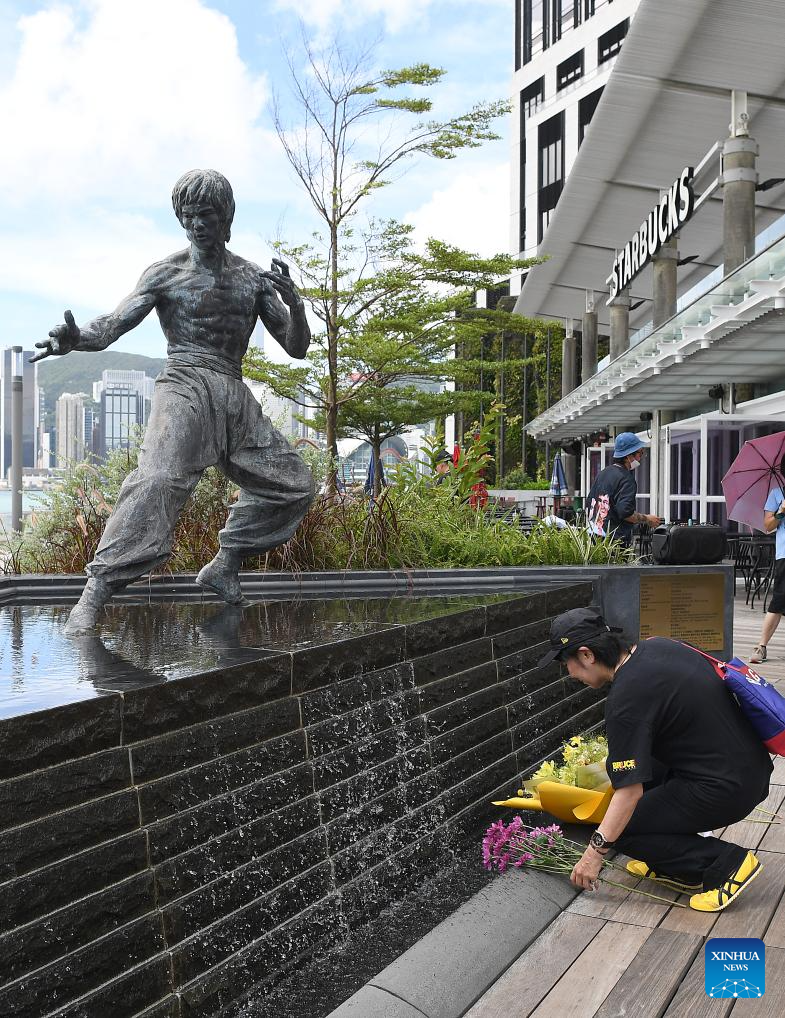



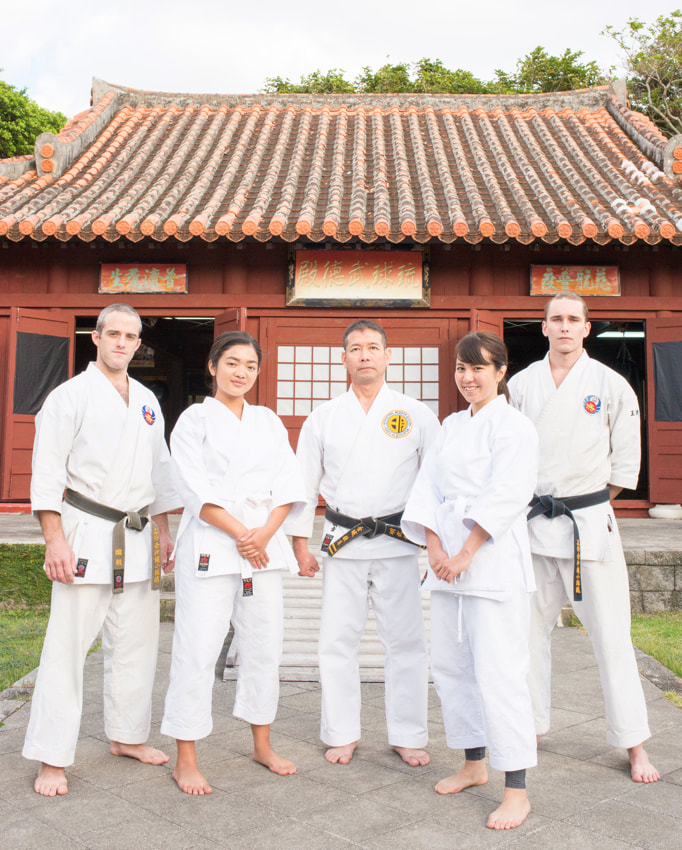









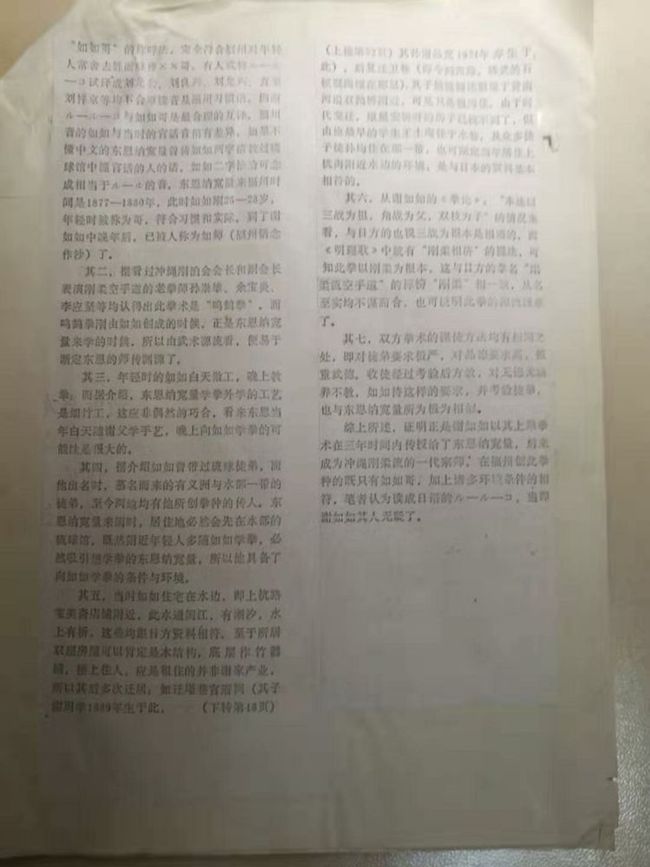




























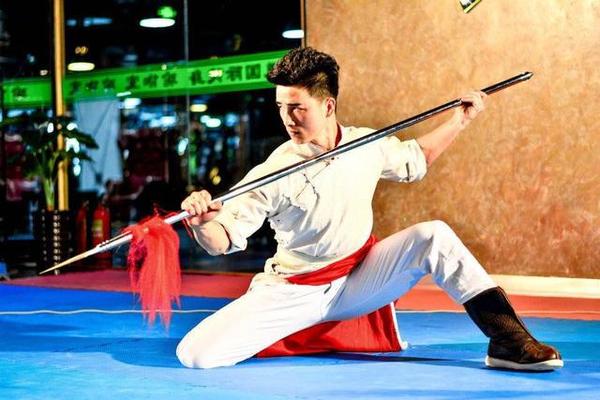













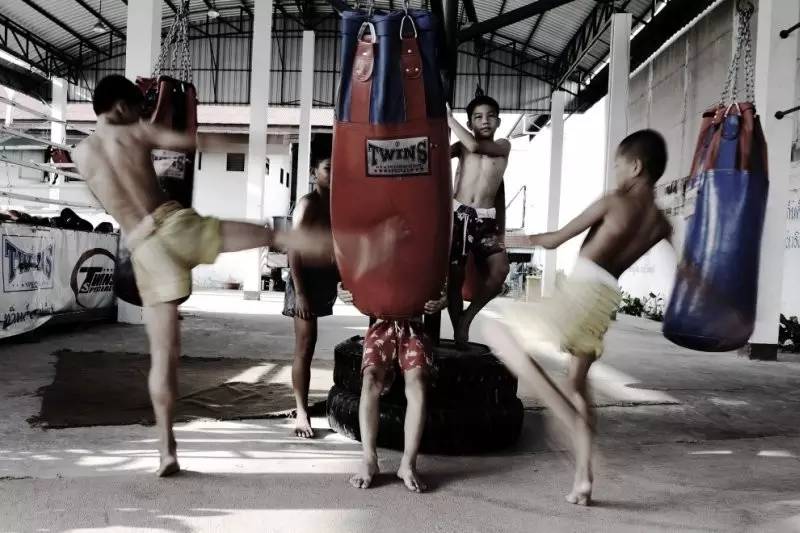

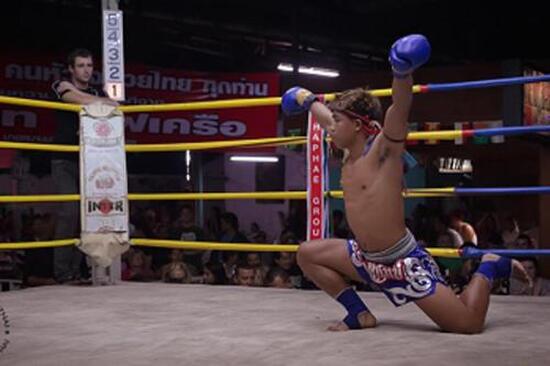
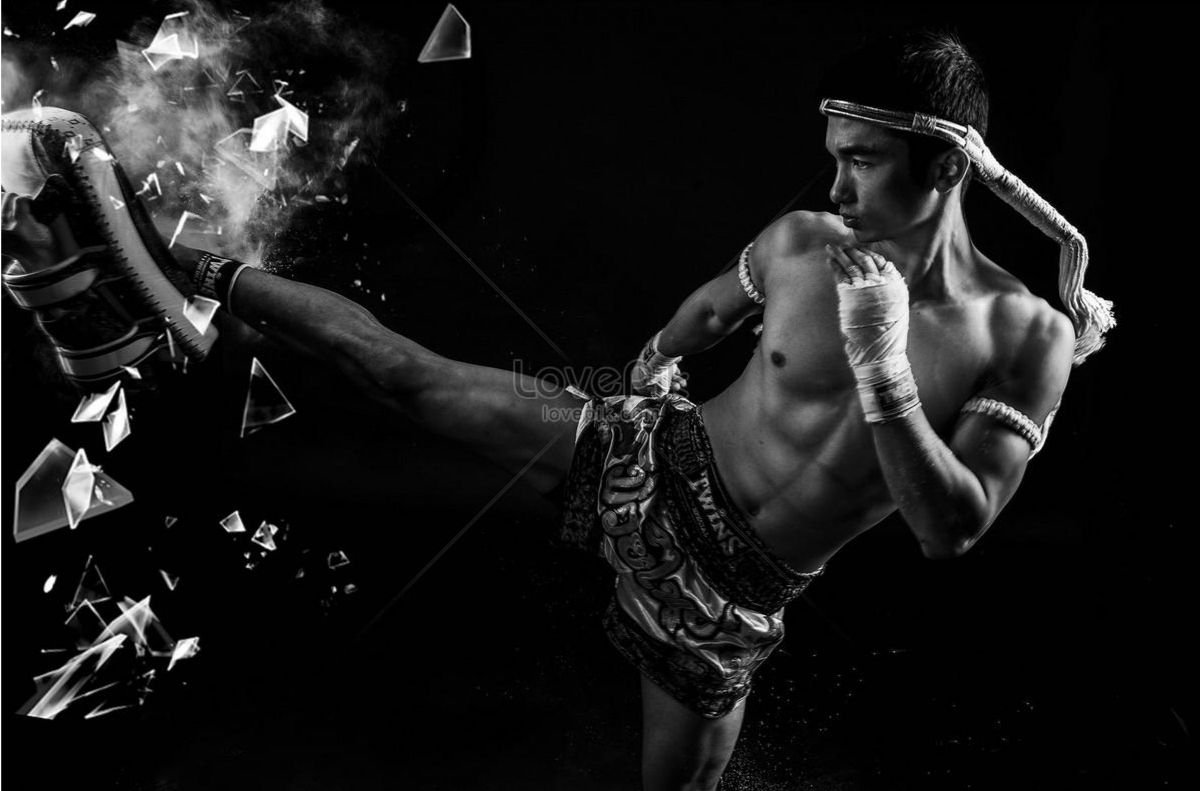
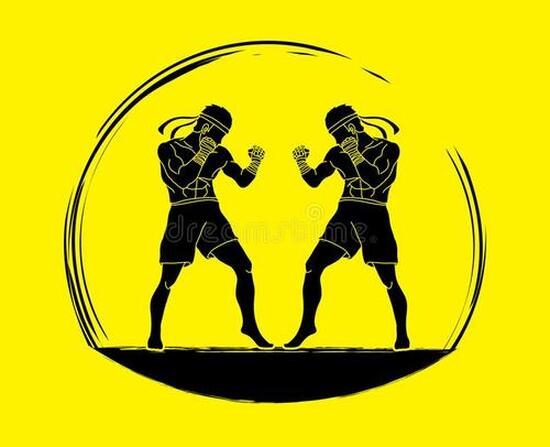
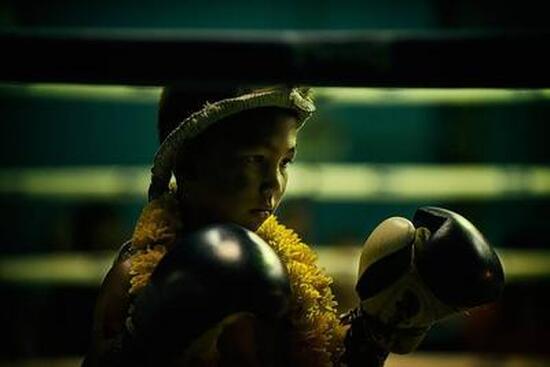

 RSS Feed
RSS Feed